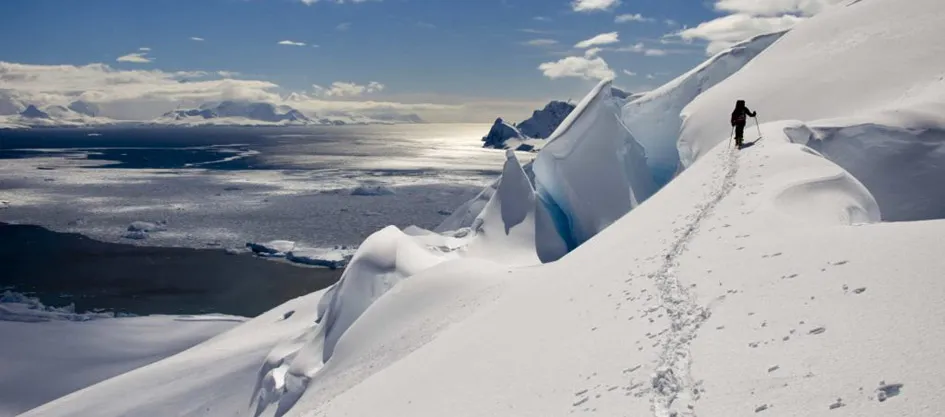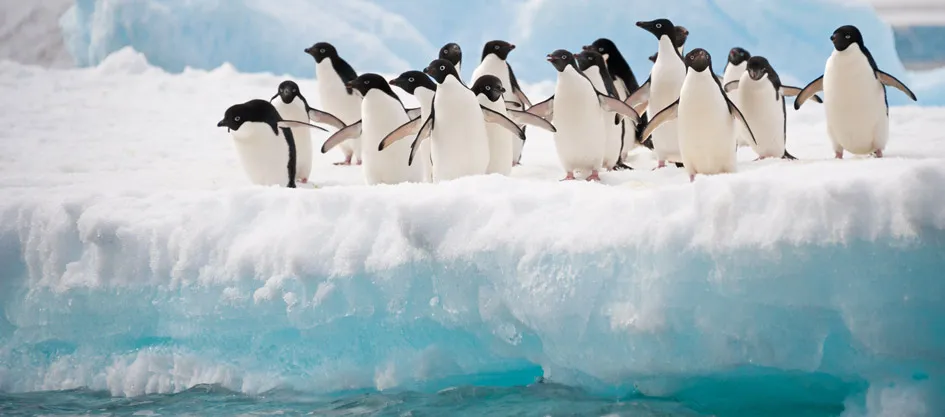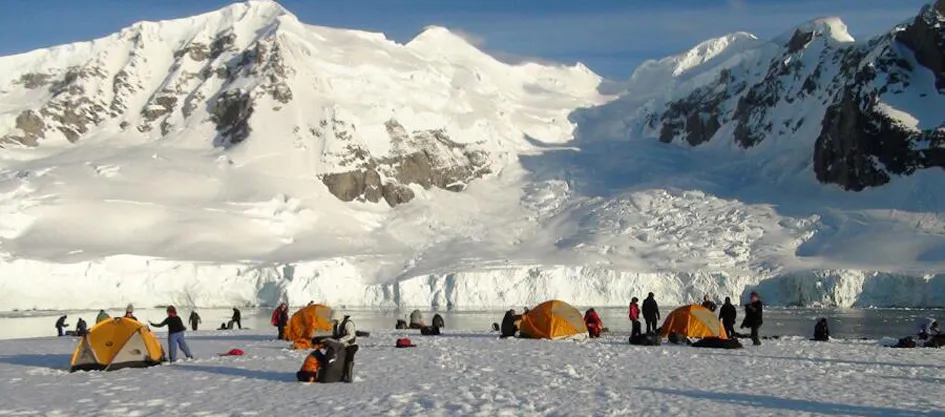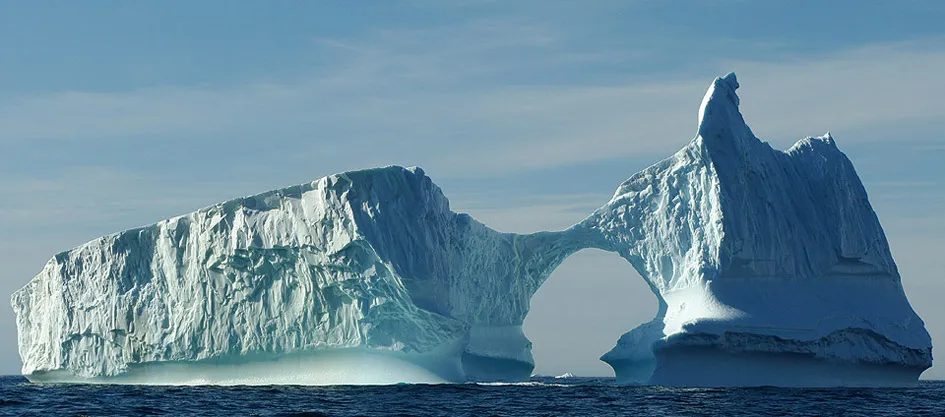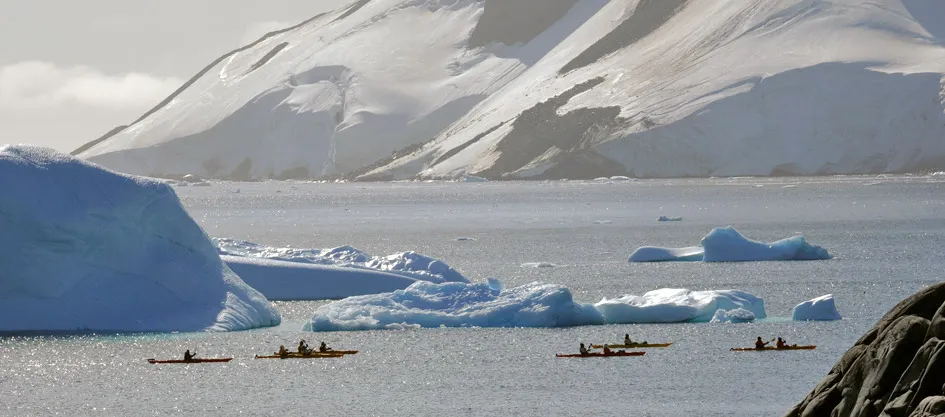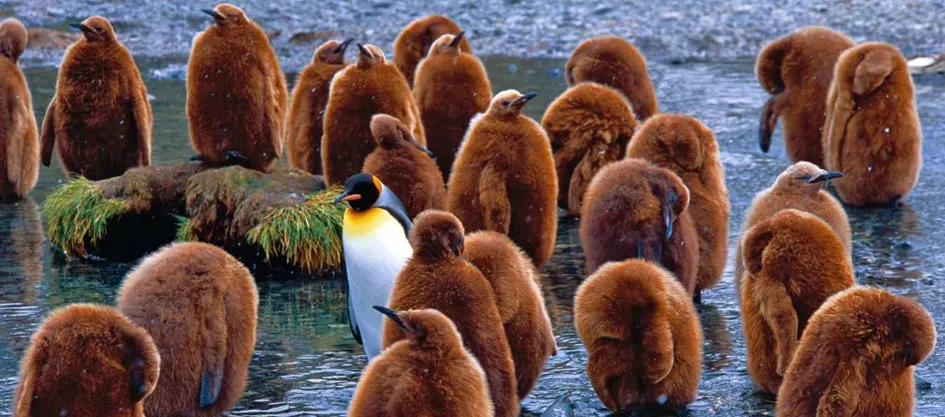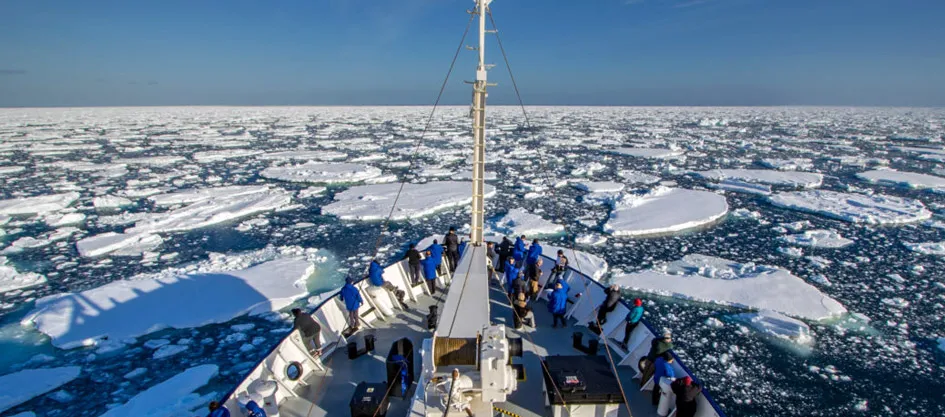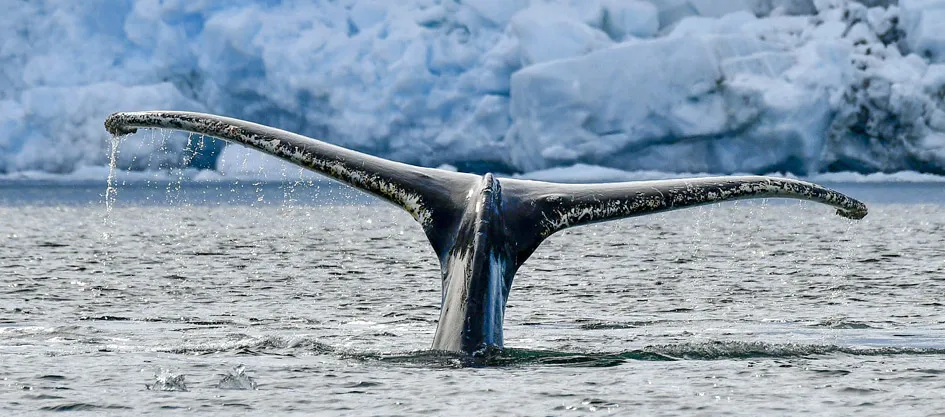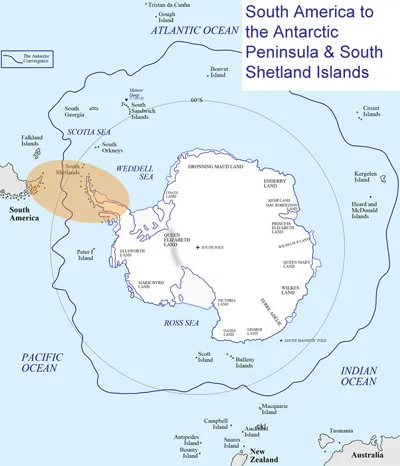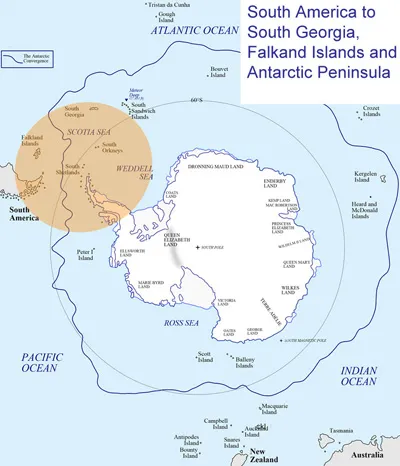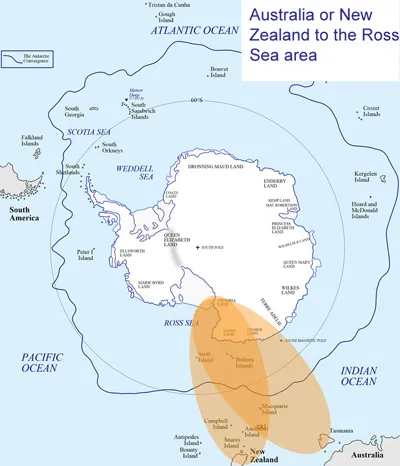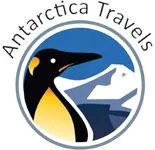
Your Antarctic Travel Story
Why Travel to Antarctica?
Polar Cruises with Cool Antarctica and Antarctica Travels
Information:
Request
Contact |
Antarctic travel
- more details |
fly to Antarctica |
FAQ's |
clothing |
boots
Regions:
Antarctic Peninsula |
South Georgia |
South Shetland Islands |
Falkland Islands |
Arctic
When someone first gets the idea to go to Antarctica, it's often a long way out from being in a position to be able go, maybe an idea from childhood or a seed that was planted by a tv program or a movie or maybe by others who went from the stories of the Heroic Age to someone closer to home.
Once the idea starts to grow it does so in the background, maybe over a year or few, a decade, half a lifetime or more.
Every now and then you'll think about it, maybe even do a bit of research to find out how much it will cost, how long you could go for and when is the best time of the year to go.
Penguins or whales will feature on the news or a nature documentary. You could go and see them, in the wild, where they live, maybe next year, maybe even this...
Something clicks, the penny drops, you think you might have the funds and the time to fulfill that dream, you start to research seriously, even fill out an enquiry form with a travel company to start being realistic and not pie in the sky about things.
So it's October to March because the continent is frozen and closed to tourists in the Antarctic winter with midwinter's day on June the 21st. That's what concentrates the wildlife in the summer, and the summer has looong days, maybe even 24 hours of daylight if you go far south enough and at the right time.
Most trips go from the tip of South America, that's cool, never been there before and it's already far enough away to feel exciting and exotic before you even leave for Antarctica.
Gear, I'll need some gear, clothing, camera, backpack, what have I already got? What can I use this as an excuse to get?
Trip chosen, itinerary decided, length, dates, find out about flights and if I need a visa.
Booked! - I'm going, I'm going, I'm going!
How long are trips? Where do They Go?
Antarctic Peninsula trips - 6 to 28 days port to port from South America. Typically sail only trips are 10-12 days, fly both ways across the Drake passage are 8 days. Longer trips take in South Georgia and/or the Falkland Islands or may sail further south across the Antarctic Circle or enter the Weddell Sea.Ross Sea Region, Eastern Antarctica - Depart from and return usually to New Zealand, sometimes to Australia or sometimes from one to the other, also a small number of semi-circumnavigation trips to South America, 23 - 34 days. Sail only, no flights.
Usually included in all trips
- Accommodation and all meals on board.
- Hot drinks, snacks.
- Lectures on board ship and guidance at landing sites by the expedition team.
- Daily or bi-daily shore excursions, hiking program.
- Transfer from hotel to ship on departure day and to the airport after the cruise.
- Miscellaneous port fees, taxes and landing charges.
May be included in some trips
- Loan of waterproof boots for landings.
- Parka or wind/water resistant jacket to loan or keep.
- Some alcoholic and soft drinks.
- Flights from South America to Antarctica and back for fly-cruise trips.
- Photography program.
Usually not included
- International flights to port of departure and back, transfer from airport to hotel.
- Laundry.
- Personal communication, phone, email, fax, internet use (a limited amount of data transfer may be provided free).
- Optional excursions as available, camping, kayaking, snow-shoeing, diving, cross-country skiing etc.
- Medical and evacuation insurance (compulsory).
When Do Trips Take Place?
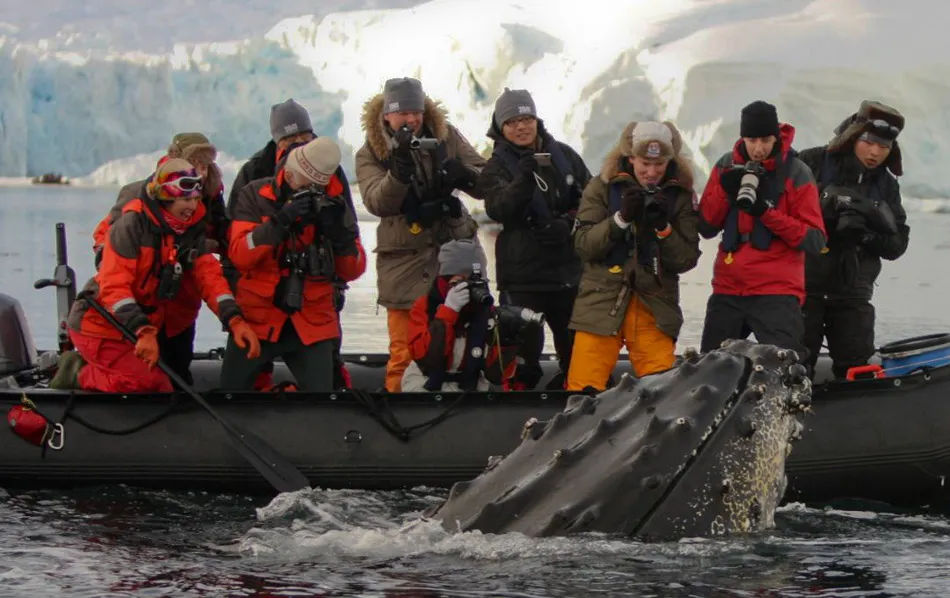
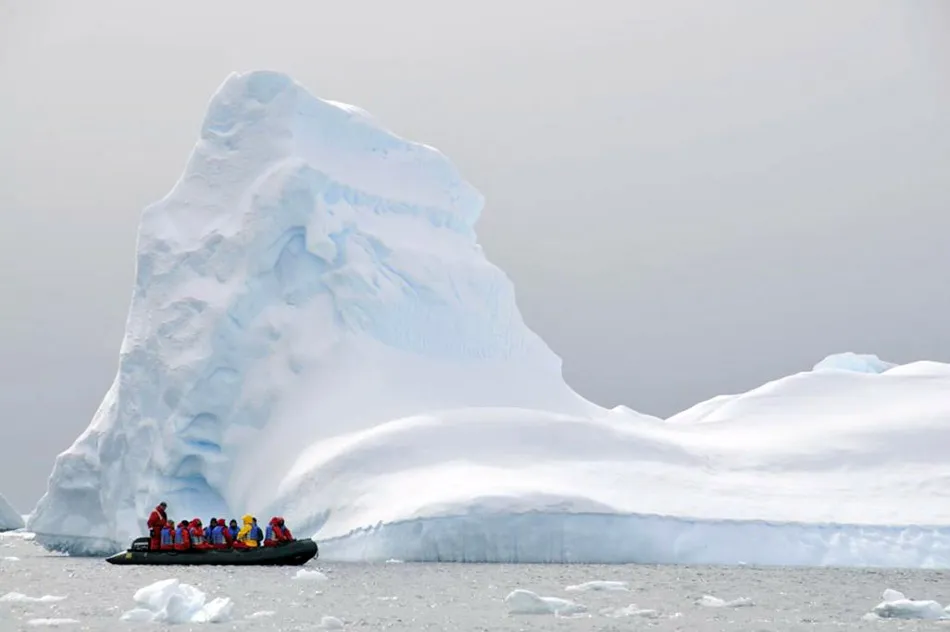
The summer temperature range
in coastal regions is a daily average of around +5C to -6C
(40F to 20F)
Late October to Early December
(Late Spring / Early Summer)
- Nest building and courting season for penguins and seabirds - spectacular courtship rituals.
- Seals visible on ice floes, beaches and alongside the ship.
- Spring wildflower season in the Falkland Islands and South Georgia.
- Elephant and fur seals establish their breeding territories on beaches.
- The winter pack ice is breaking up and breaking out. The scenery is white, clean and pristine with floating sea ice and icebergs.
Mid-December to end of January (Mid Summer)
- Usually Antarcticas warmest months.
- Extended daylight hours bring spectacular lighting and unique opportunities for midnight photography.
- Across Antarctica, penguin chicks begin to hatch.
- South Georgia and the Falklands, the first chicks appear and fur seals enter their breeding season.
- Seal pups can be spotted on both South Georgia and the Falklands.
- The retreating ice opens up new areas for exploration.
February and March (Late Summer)
- The Peninsula offers prime whale-watching opportunities.
- Penguin chicks begin to fledge, by late February to early March, most Adelie and Gentoo colonies are nearly deserted.
- Snow algae bloom across the landscape, adding splashes of color to the ice.
- As the pack ice recedes, ships can venture farther south.
- Fur seals become increasingly common along the Antarctic Peninsula.
Where do trips leave from?
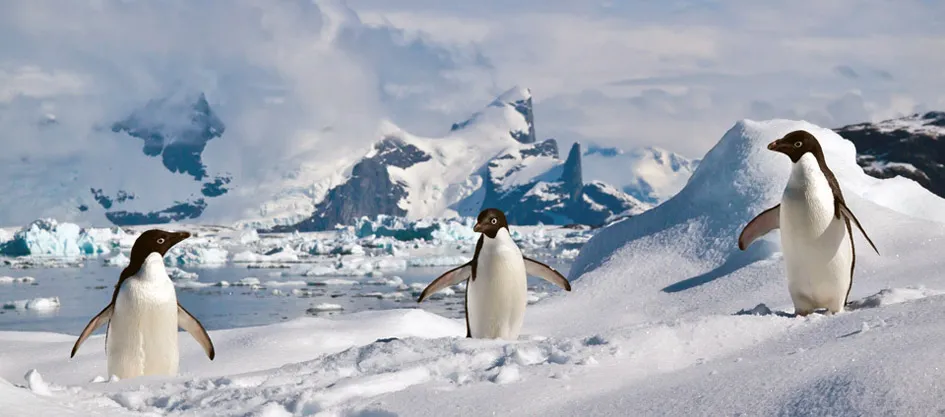
Trips to the Ross region and Eastern Antarctica most commonly leave from New Zealand, or (much) less commonly from Hobart, Australia, These trips may involve two different ports sometimes departing from one and returning to another.
No documentation or visas are required to visit Antarctica other than a passport as these matters are dealt with by your cruise line. You may need visas and documentation for Argentina, Chile, Australia or New Zealand depending on your passport, likewise if you stop off at other countries en route.
Ship Size and the Ship-Board Experience
There are more passenger ships going to Antarctica now than at any other time in the past, with a range of sizes, itineraries and levels of comfort.
Antarctic cruises are quite different from the well-known
voyages to warmer destinations filled with professional entertainers.
While larger vessels may offer some onboard entertainment, all
ships will have a team of highly knowledgeable and experienced
guides. These experts regularly deliver fascinating lectures
on Antarctic history and natural history, and are often available
in the evenings to chat and share stories.
The International
Association of Antarctic Tour Operators (IAATO) sets guidelines
for ship size in Antarctic waters and for conduct at landing
sites. Though membership is voluntary, IAATO is widely respected,
and it's strongly recommended that you choose a ship belonging
to this organization for a responsible and enriching Antarctic
experience.
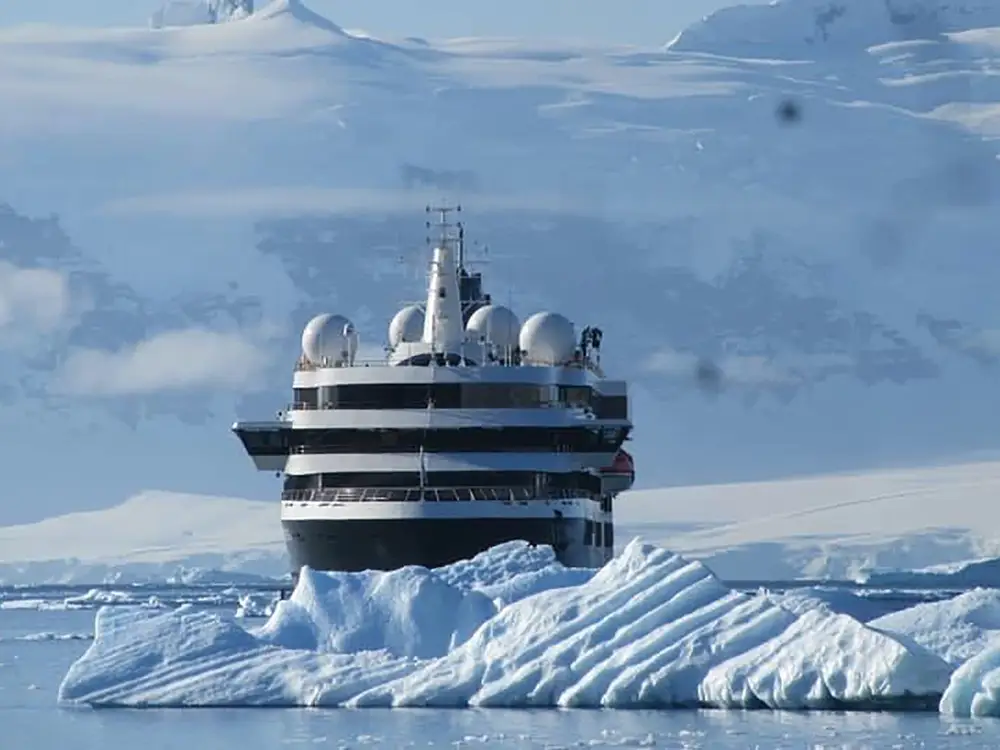
Small Ship Advantages
One key rule affecting Antarctic visits is that no more than 100 passengers may be ashore at a single site at any given time. On smaller ships carrying up to 100 guests, everyone can disembark at each landing. Larger ships offer fewer opportunities to go ashore. In some cases, landings are time-limited, perhaps an hour or so, so groups can rotate. Of course, some travelers choose to remain aboard for the entire journey, and that option is always yours.
How much does it cost?
Prices start at around USD $8,000 for a berth in a twin cabin, with triple or quad arrangements often available for 15-25% less. This does not include airfare or other incidental expenses to and from your point of embarkation. At the other end of the spectrum, the most luxurious ships and cabins on extended voyages can cost USD $50,000 or more. Solo travellers can usually secure a private cabin by paying a supplement, but it's more common to share with another traveller of the same gender at the standard twin or triple rate.
You could organise a custom trip with others through a small-vessel operator, following your own itinerary. Costs are negotiable, but generally comparable to those of mid- to high-range scheduled voyages.
$12,000 -$14,000 per passenger for a 10-14 day cruise is a reasonable amount to expect to pay with plenty of choice of vessels and itineraries.

Can I fly to Antarctica?
Yes - Fly-Cruise trips to Antarctica allow you to fly over the Drake Passage from Punta Arenas, Chile, to Frei Station (Chilean) on King George Island in the South Shetland Islands, a journey of roughly two hours aboard a 70-passenger BAE 146-200 aircraft. From there you board your ship and spend about eight days exploring the Antarctic Peninsula before returning to King George Island for your flight back to Punta Arenas.
Advantages of flying
By flying instead of sailing, you avoid crossing the Drake Passage by ship, a stretch of ocean that can be notoriously rough (though at times perfectly calm). For travellers prone to seasickness, skipping this crossing can make an Antarctic trip possible.
Time saving - by avoiding two crossings of the Drake Passage, you save roughly four days, making it possible to visit Antarctica without spending so much time in transit.
Disadvantages of flying
You won't experience crossing the Drake Passage by ship, a journey many find magical. Sailing to Antarctica offers a gradual introduction to the continent where the weather and ice change slowly, albatrosses arrive to glide in your wake, and there's the thrill of spotting your first icebergs, penguins, seals, and seabirds as the land draws near.
Delays to your trip - Although no Antarctic Fly-Cruise departures have yet been cancelled due to weather, some trips have experienced delays of up to three days. Current estimates suggest a 5-10% chance of delay. Ships can operate in Antarctic conditions that keep planes grounded, so it's important to allow some flexibility in your return travel plans.
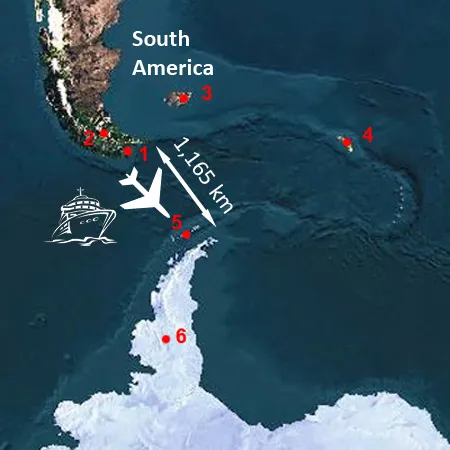
You can sail or fly across the Drake Passage from
South America to the Antarctic Peninsula.
1 - Ushuaia,
Argentina, 2 - Punta Arenas, Chile
3 - Falkland Islands, 4
- South Georgia
5 - South Shetland
Islands, 6 - Antarctic Peninsula
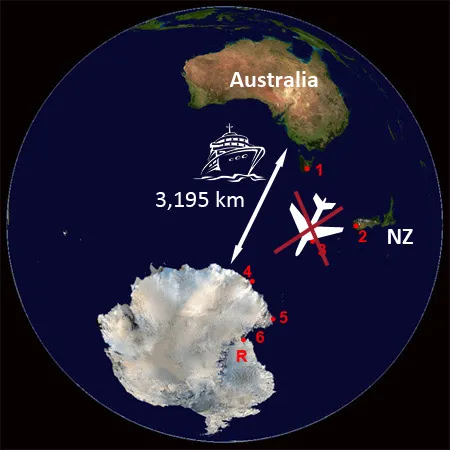
Trips from New Zealand and Australia are sail
only, there are no flights.
R - Ross Ice Shelf, 1 - Hobart
- Australia
2 - Invercargill / Port
of Bluff - New Zealand
3 - Macquarie
Island, 4 - Commonwealth Bay
5 - Cape Adare, 6
- McMurdo / Scott bases

Contact me about my trip to Antarctica!
Please complete the form
and an Antarctic Expert will contact you
Departures from late October to late March
Our partner company, Antarctica Travels, passionately help people to reach their ultimate destination.
All enquiries will be answered from our office in Patagonia, Argentina.
Dozens of trips - unique combinations of ship + itinerary
Choice of ships - 67 to 199 passenger capacity
Prices from $5,900 per person
6 to 28 days
Please note - we cannot help directly to find employment in Antarctica, please do not use this form to request any other information than for Antarctic tourist trips
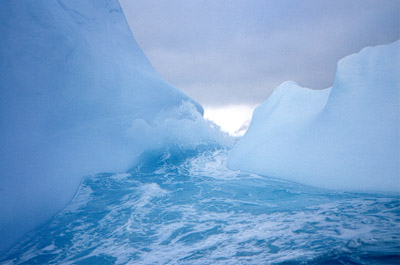
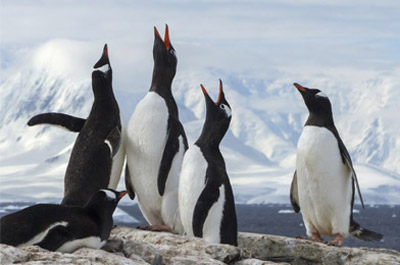
Picture credits: Map of Antarctica - maps used courtesy of Uwe Dedering under the Creative Commons Attribution-Share Alike 3.0 Unported licence / Cuverville Island used courtesy of mike from New York NY US under the Creative Commons Share Alike 2 licence


